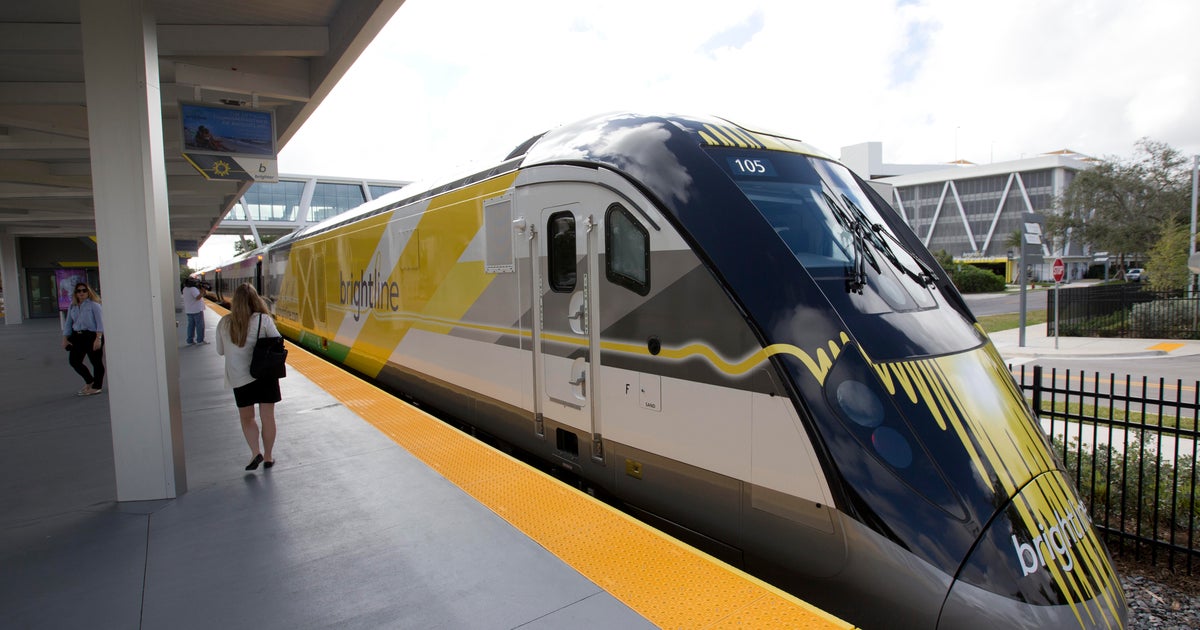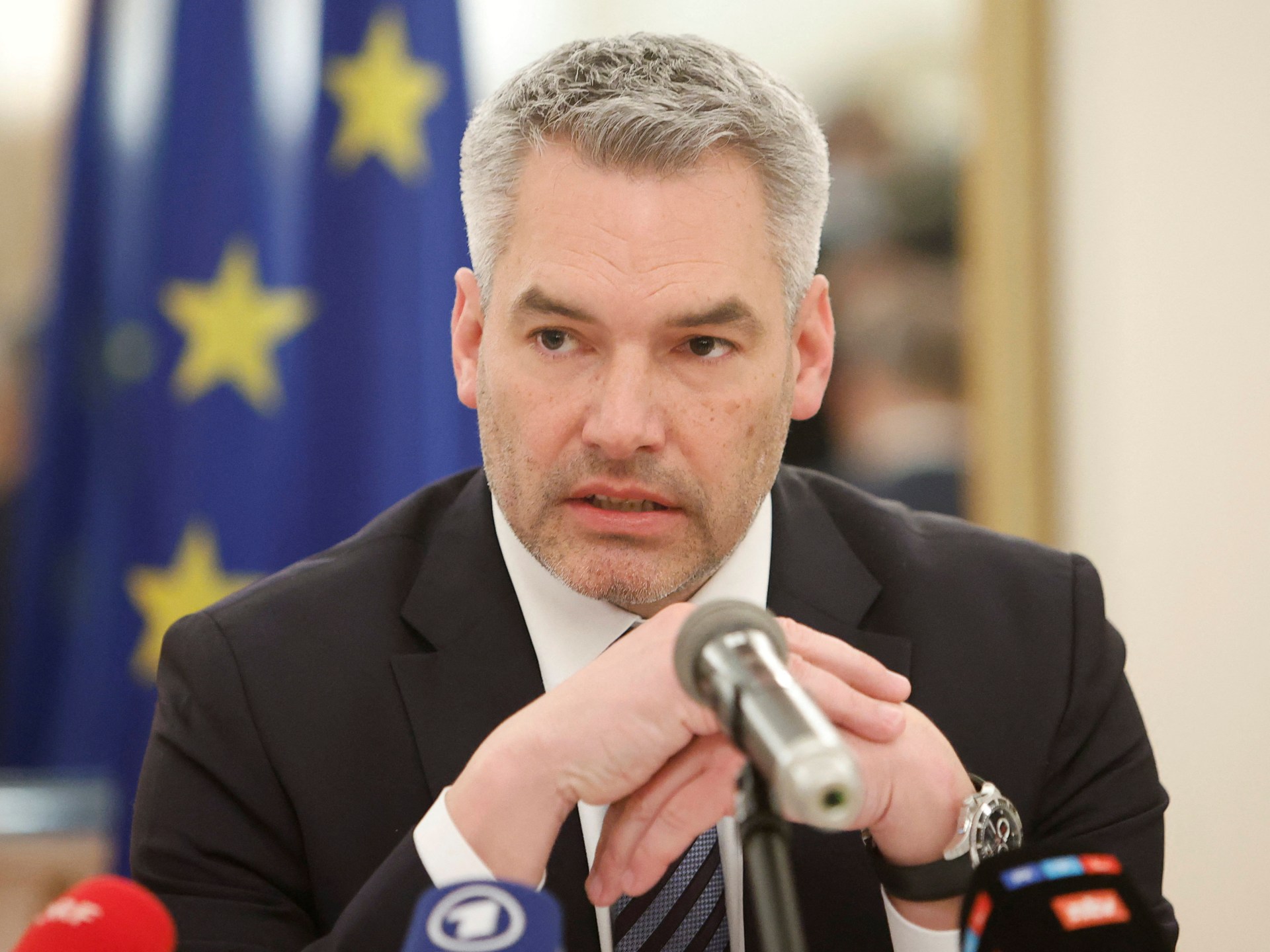California
Biden administration pledges $6 billion for California high-speed electric rail routes

The Biden administration on Tuesday said it will give more than $6 billion to a pair of high-speed electric rail routes in the U.S. West, injecting new life into long-stalled projects hailed by supporters as the future of public transportation but bemoaned by critics for their high price tags and lengthy construction times.
U.S. senators from California and Nevada said the federal government will give $3 billion for a planned privately-owned route between Las Vegas and the Los Angeles area plus another $3.1 billion for an initial segment of California’s publicly-funded effort to eventually connect Los Angeles and San Francisco.
The money is a fraction of the total cost to build the routes. But it signals the Biden administration’s commitment to high-speed rail, a mode of transportation commonplace in Europe and Asia but bypassed in the U.S. and its car-obsessed culture.
“The federal government is back on building high speed rail in America,” said Brian Kelly, CEO of the California High-Speed Rail Authority that is overseeing the public project. “This award is just a great leap forward.”
In 2008, California voters gave their blessing for a 500-mile (805-kilometer) project that promised to carry passengers between Los Angeles and San Francisco in under three hours on a fully-electric train traveling at speeds of up to 220 mph (354 kph). At the time, the project was projected to cost about $30 billion and be up and running by 2020. If running today, it would be the nation’s fastest train service by far.
But more than a decade later, the price has ballooned to more than $100 billion, of which only about $25 billion in funding has been identified by state officials. Today, officials are focusing on a 119-mile (190-kilometer) stretch that would connect the cities of Merced, Fresno and Bakersfield that would not open until 2033 at the latest. Those three cities are in California’s Central Valley, which has some of the worst air quality in the country. The $3.1 billion would go exclusively toward work on that segment.
Kelly, CEO of the California High-Speed Rail Authority, said the new federal money will help close a funding gap of about $10 billion for the Central Valley route. He said the authority will look for more money in the future from both the federal and state governments. California Democratic Gov. Gavin Newsom called the funding “a vote of confidence” and said it comes “at a critical turning point” for the project.
Funding for the project has been on a rollercoaster in recent years, with former President Donald Trump trying to revoke $1 billion in federal money first granted by the Obama administration. Then state lawmakers, including Democrats, tried to block Gov. Gavin Newsom from releasing more than $4 billion in voter-approved bond money due to concerns about the project’s viability. Both pots of money have since been made available.
“California is delivering on the first 220-mph, electric high-speed rail project in the nation,” Gov. Newsom said in a statement announcing the Biden administration’s investment Tuesday. “This show of support from the Biden-Harris Administration is a vote of confidence in today’s vision and comes at a critical turning point, providing the project new momentum.”
The route between Las Vegas and Los Angeles has been talked about for decades, and Nevada U.S. Sen. Jacky Rosen told reporters the project now has all required right-of-way and environmental approvals, along with labor agreements, for work to start on some 218 miles (351 kilometers) along the Interstate 15 corridor.
No date was announced for work to start. But Rosen said electric-powered trains could be carrying passengers by the time Los Angeles hosts the Summer Olympics in 2028.
“We’re ready to get to work,” Wes Edens, founder and chairman of Florida-based Brightline, said in a statement ahead of a Friday event in Las Vegas that may coincide with a visit by President Joe Biden.
Rosen and U.S. Sen. Catherine Cortez Masto, both Democrats, led a bipartisan group including all of Nevada’s elected federal lawmakers and four House members from California that in April urged Biden to commit up to $3.75 billion in federal infrastructure funds toward what they call a public-private partnership.
Planners say trains carrying passengers at nearly 200 mph (322 kph) could cut in half a four-hour freeway trip from a station in Las Vegas through Victorville, California, to a suburban Los Angeles light rail line in the San Bernardino County city of Rancho Cucamonga.
They say the service could help alleviate weekend or end-of-holiday travel traffic jams that often stretch for 15 miles (24 kilometers) on I-15 near the Nevada-California line.
“Connecting Las Vegas and Southern California by high-speed rail will create tens of thousands of good-paying union jobs, boost our Southern Nevada tourism economy, and finally help us cut down on I-15 traffic,” Cortez Masto said Tuesday in a statement.
Calls for a high-speed rail line whisking tourists through the Mojave Desert to Las Vegas date at least to 2001, said U.S. Rep. Dina Titus, a Democrat who represents the Las Vegas Strip. The proposal had starts, stops and various names over the years, before getting sidetracked during the COVID-19 pandemic.
Florida-based Brightline Holdings LLC, which built the only privately-owned and operated intercity passenger railroad in the U.S., is expected to model the Las Vegas line on service it began in 2014 on Florida’s east coast. That route now links Miami and Orlando with trains reaching speeds up to 125 mph (200 kph).
___
Ritter reported from Las Vegas. Associated Press journalist Kathleen Ronayne contributed.

California
The big California stories shaping up in 2025, according to our newsroom

Good morning, and welcome to the Essential California newsletter. Here’s what you need to know to start your weekend:
The big California stories to watch in 2025, according to our newsroom
Just like that, we’re in the back half of the decade.
I won’t predict what 2025 will bring to the Golden State and wider world. But I will share the big stories I think will define life in California over the next 12 months:
- CA vs. DJT (Round 2). California fought President Trump constantly to safeguard its liberal policies. How will old battles and new fights play out in Trump’s second term?
- California voters challenged the state’s deep-blue reputation in the 2024 election. How will the pendulum swing away from progressive policies affect crime, incarceration, housing, low-wage labor and other facets of life in the Golden State?
- What will the real-time effects of climate change look like in California? How will our leaders and communities respond?
- Hollywood is still struggling. Will the industry, a major contributor to the state’s economy, reach a healthy rebound this year?
But I don’t do this alone. Telling California’s story is a newsroom-wide task, so I asked some of my colleagues what stories they would be following in 2025 and why. Here’s what they shared.
California Gov. Gavin Newsom speaks during a news conference in Los Angeles on Sept. 25, 2024.
(Eric Thayer / Associated Press)
Gov. Gavin Newsom is maneuvering.
“The governor uses Trump as a foil to stoke his Democratic base,” Taryn Luna, who covers Newsom and state government, told me. Watch for Newsom to take advantage of every opportunity this year to contrast himself with the MAGA leader as buzz grows about his own potential presidential run in 2028.”
College campuses will almost certainly be another battlefield.
“President-elect Trump has said that many universities are run by ‘Marxist maniacs’ and has promised to reel in what he sees as professors and schools that veer too far to the left,” higher education reporter Jaweed Kaleem noted. “I’m curious if and how he will do that in California, a state with several of the top-ranked public and private universities in the country.”
Then there’s immigration.
“It colors this state from Silicon Valley to the Central Valley to the deep-blue politics that govern Sacramento,” columnist Gustavo Arellano shared. “Gov. Newsom, the State Legislature and many municipalities have vowed to fight whatever Trump may bring — but how will it actually play out? As California goes…”

The 2024 election results in California include the passage of a tough-on-crime ballot measure, along with confirmed or likely defeats for two progressive district attorneys and an initiative to give prisoners more labor rights.
(Rich Pedroncelli / Associated Press)
California moved right on crime. Now what?
“Following a November election cycle that saw Californians overwhelmingly support tougher penalties on certain crimes and outright reject progressive prosecutors and sentencing reforms, I’ll be closely tracking the impacts of these policy shifts throughout the state,” James Queally, The Times’ crime and policing reporter, told me.
“I hate to say it, but I think the H5N1 bird flu outbreak is going to continue to pester us as we move into 2025.”
That’s input from environmental health reporter Susanne Rust. “Public health, agriculture and wildlife officials are all hoping it will peter out like so many flu and viral outbreaks before. But its reach into people, wildlife and our food supply make it seem like its grasp is secure — multiple reservoirs within which it has found safe harbor and room to mutate and evolve.”
Owning a home is probably not going to get any easier.
“Structural factors underlying California’s affordability problems, such as an inadequate supply of homes, should remain in 2025. And incoming-President Trump’s proposals are likely to add uncertainty in the broader market,” said housing reporter Liam Dillon.
Newsom and Sacramento Democrats could pit climate progress and cheap energy against each other.
“With electric rates continuing to rise and gasoline prices always too high, Gov. Gavin Newsom and state legislative leaders have pledged to make energy affordability a top priority in 2025,” climate columnist Sammy Roth shared. “In theory, that should be good news for clean energy, since solar and wind power are already cheaper than fossil fuels, and electric cars continue to come down in cost. But the political realities are often more complicated.”

Dolly grip Diego Mariscal, who created the Facebook group Crew Stories in 2017, has seen the emotional toll of Hollywood’s slowdown firsthand.
(Jennifer Rose Clasen)
Hollywood limps on.
“Last year, Hollywood’s crew members clung to the mantra ‘survive til ’25,’ but as we enter 2025, survival still feels like the name of the game. Strikes, streaming cutbacks, runaway productions and AI advances have left below-the-line workers scrambling for stability,” film business reporter Josh Rottenberg told me. “With diversity gains slipping and a fragmented audience reshaping what gets made, this year could be a turning point — or another uphill battle — for the people who keep the film business running.”
Could Kamala Harris run for governor?
Politics reporter Julia Wick told me she’ll be paying attention to what Kamala Harris does next and the ramifications for California politics.
“If Harris gets into the 2026 gubernatorial race [a big if!] her presence would totally scramble the race and clear some of the field,” she explained. “Her presence would also create a chaotic domino effect on down-ballot races, as other candidates reassess their chances and scramble to run for other things.”
California’s big transportation goals could face some bumps in the road (and tracks).
From LAX’s $30-billion overhaul ahead of the 2028 Olympics to high-speed rail to electric cars, there’s a lot of plans to cut traffic congestion and clear the state’s awful air.
But transportation reporter Colleen Shalby says we should expect some friction with the incoming administration on multiple fronts.
“California’s high-speed rail project has already faced uncertainty, with tens of billions of unidentified dollars to finish the train and no clear deadline for completion as construction has so far been isolated to the Central Valley,” she told me. “Trump’s Cabinet picks have identified the project as one that has wasted federal dollars and a state lawmaker plans to introduce legislation to defund it,” she shared.
The week’s biggest stories

A Tesla Cybertruck is shown after an explosion outside the Trump International Hotel on Wednesday in Las Vegas.
(Associated Press)
Mystery surrounds the decorated Green Beret who killed himself and exploded a Tesla Cybertruck
- The case is being investigated as a possible act of terrorism, though officials said they are still trying to find a motive for the violence.
- Here is what we know about the Green Beret who has been identified as the driver of the Cybertruck.
- Federal officials say there is no direct link between the explosion and the attack in New Orleans that killed at least 14 people, but the investigation continues.
Newsom aims to limit unhealthy food in California, getting ahead of Trump and RFK Jr.
- Gov. Gavin Newsom issued an executive order on Friday attempting to limit access to ultra-processed foods, a move he described as a continuation of California’s “nation-leading” nutrition and health standards.
- The governor did not mention Robert F. Kennedy Jr., who has also been a vocal critic of ultra-processed foods. But Newsom’s order signals his refusal to concede the issue to the incoming Trump administration.
Drug overdose deaths have plummeted in San Francisco. What’s changed?
- The city recorded 586 fatal overdoses in the first 11 months of 2024. That represents a nearly 23% decrease, or 174 fewer deaths, compared with the first 11 months of 2023.
- Experts credit better access to overdose-reversal medication and medications that ease opioid addiction, as well as the waning effects of the COVID pandemic.
The question sending shockwaves through Hollywood: How did Blake Lively get those damaging texts?
More big stories
Get unlimited access to the Los Angeles Times. Subscribe here.
This week’s must reads

(Gina Ferazzi / Los Angeles Times)
Her mother’s killer, now sick with prostate cancer, was released last year under California’s newest compassionate release law. The daughter now wants to change the state’s reform laws.
“The person who murdered my mother has been released. That tells me something is very, very wrong in California,” the daughter said.
More great reads
How can we make this newsletter more useful? Send comments to essentialcalifornia@latimes.com.
For your weekend

New year, new month and new restaurants and bars to check out.
(Collage by Brandon Ly / Los Angeles Times; photos by Stephanie Breijo / Los Angeles Times)
Going out
Staying in
How well did you follow the news this week? Take our quiz.

(Times staff and wire photos)
Which Los Angeles Laker notched his 40th birthday earlier this week? Plus nine other questions from our weekly news quiz.
Have a great weekend, from the Essential California team
Ryan Fonseca, reporter
Check our top stories, topics and the latest articles on latimes.com.
California
Twister, California’s first of 2025, touches down near Shasta County after powerful storm

How to remember tornado watch vs. tornado warning
Here’s the most Indiana way possible to remember the different tornado terms – a pork tenderloin sandwich.
A strong thunderstorm birthed a rare tornado on Friday evening near Paynes Creek in Tehama County, close to the Shasta County border, according to meteorologists.
Scientists will study video and weather information where the twister touched down in the wilderness, about 8 miles northeast of Dairyville and 10 miles east of Cottonwood, the National Weather Service said.
The tornado developed between 5:18 and 5:21 p.m., prompting the weather service to issue a tornado warning for both counties by 5:22 p.m. Reports came to the agency almost immediately from a weather “spotter,” and webcams caught the event as it happened, said meteorologist Johnnie Powell at the weather service’s Sacramento branch.
As of 8: 45 p.m., there were no reports the twister injured anyone, or that it damaged any homes or businesses, according to the Tehama County Sheriff’s Office and Office of Emergency Services.
The North State has the dubious honor of having the first tornado of 2025 in California, possibly in the whole country, Powell said.
It was also the latest of at least 12 tornadoes spotted in Tehama County in 76 years, according to weather experts.
Here’s what we know about Friday’s tornado, and other North State twisters.
How a tornado grew over Tehama County
The thunderstorm that brought hail and heavy rain to the northern Sacramento Valley Friday evening, also triggered the twister, Powell said.
Tornadoes form when air, blowing in different directions, rises up in a thunderstorm and begins to spin, according to the National Center for Atmospheric Research.
The storm dissipated late Friday evening, Powell said, and the Redding area should be mostly dry this weekend and next week, with sunny skies.
Note to readers: If you appreciate the work we do here at the Redding Record Searchlight, please consider subscribing yourself or giving the gift of a subscription to someone you know.
How big and fast was the tornado?
Meteorologists have yet to learn how strong Friday’s tornado was, and how fast the wind was, Powell said.
The weather service could announce those answers as soon as Saturday, but first scientists need to look at the extent of the damage in daylight, Powell said: Are there overturned trees? What does the tornado’s path on the ground look like? Those things will give scientists the clues they need to come up with those answers.
“Even in Kansas, you have to wait” for tornado details, Powell said.
How many tornadoes formed over Northern California?
A tornado forming over the North State is a rare event, but not unheard of.
Tehama County had the most tornadoes — a total of 11 twisters — between 1950 and 2024, according to Golden Gate Weather Services consulting firm. Two of those tornadoes formed at the same time of year: Jan. 4, 2021. The most recent tornado reported by Golden Gate was on April 25, 2021.
All three twisters in 2021 were very weak (EF0 on the Enhanced Fujita Scale). That means the tornadoes’ winds ranged between 65-85 mph, according to the weather service. At those speeds, EF0 tornadoes may knock a few shingles off a roof, damage gutters and push loose items like lawn furniture around. Compare that to the strongest tornadoes (EF5), with winds moving at more than 200 mph.
During the same 75-year period, one tornado was spotted in Siskiyou County and four in Lassen, but none spun their way into Shasta or Trinity counties, Golden Gate reported.
The county with the most tornadoes sightings (49) between 1950 to 2024 is also one of the most densely populated. It was Los Angeles County.
Please refresh your browser for the latest radar loop.
Where to read more about tornadoes in California
To learn more about tornadoes, see the weather service’s tornado information website at weather.gov/ffc/torntext and UCAR’s tornado website at scied.ucar.edu/learning-zone/storms/how-tornadoes-form.
Go to Golden Gate Weather’s website to read a history of known tornadoes in California ggweather.com/ca_tornado.
Jessica Skropanic is a features reporter for the Record Searchlight/USA Today Network. She covers science, arts, social issues and news stories. Follow her on Twitter @RS_JSkropanic and on Facebook. Join Jessica in the Get Out! Nor Cal recreation Facebook group. To support and sustain this work, please subscribe today. Thank you.
California
Whooping cough cases rise in California

(KRON) — California is seeing a rise in cases of whooping cough, a highly contagious bacterial disease that can cause severe illness, state health officials said Friday. Whooping cough, also known as pertussis, is especially harmful to infants, according to the California Department of Public Health.
The CDPH is urging all Californians, especially those who are pregnant or provide care to infants, to be up to date on their Tdap (tetanus, diphtheria, pertussis) vaccine.
Dr. Tomas Aragon, CDPH Director and State Public Health Officer, explained, “Since the COVID-19 pandemic has subsided, many practices that had lowered instances of whooping cough are no longer in place, and we’re seeing the disease return to pre-pandemic levels.”
People who are vaccinated against whooping cough are protected against severe illness and complications due to whooping cough. Complications causing apnea — dangerous pauses in breathing — and can be fatal for babies, according to CDPH.
“More than 2,000 cases of whooping cough were reported statewide between January and October 2024. Sixty-two of those cases were infants less than four months of age who were hospitalized, including one infant who tragically died,” state health officials wrote.
People with whooping cough have severe coughing attacks that can last for months.
The CDPH said vaccination is recommended for all:
- Pregnant people between 27 and 36 weeks of pregnancy, even if they have received Tdap in the past.
- Adults, every 10 years.
- Adolescents aged 11 or 12 years (Tdap vaccine is also required for 7th grade advancement in California).
- Infants and young children receive their own whooping cough (DTaP) vaccines starting at 2 months through 4-6 years of age.
-

 Health1 week ago
Health1 week agoNew Year life lessons from country star: 'Never forget where you came from'
-
/cdn.vox-cdn.com/uploads/chorus_asset/file/24982514/Quest_3_dock.jpg)
/cdn.vox-cdn.com/uploads/chorus_asset/file/24982514/Quest_3_dock.jpg) Technology1 week ago
Technology1 week agoMeta’s ‘software update issue’ has been breaking Quest headsets for weeks
-

 Business4 days ago
Business4 days agoThese are the top 7 issues facing the struggling restaurant industry in 2025
-

 Politics1 week ago
Politics1 week ago'Politics is bad for business.' Why Disney's Bob Iger is trying to avoid hot buttons
-

 Culture4 days ago
Culture4 days agoThe 25 worst losses in college football history, including Baylor’s 2024 entry at Colorado
-

 Sports3 days ago
Sports3 days agoThe top out-of-contract players available as free transfers: Kimmich, De Bruyne, Van Dijk…
-

 Politics2 days ago
Politics2 days agoNew Orleans attacker had 'remote detonator' for explosives in French Quarter, Biden says
-

 Politics2 days ago
Politics2 days agoCarter's judicial picks reshaped the federal bench across the country

















